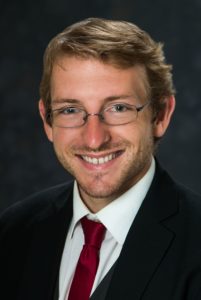Biography
 Growing up in South Florida, I moved to Boston, Massachusetts in 2012 to attend MIT. There, I studied mathematics, taking the ‘theoretical’ track’s courses. During my Junior year, I studied at the University of Cambridge as part of MIT’s Cambridge-MIT Exchange Program. There, I took courses in Cambridge’s “Part II”, effectively the last year of Cambridge math(s) students’ undergraduate education. Back at MIT for my senior year, I focused on completing the Scheller Teacher Education Program by completing coursework at MIT and Wellesley and doing a practicum at Brookline High School, teaching Algebra II and Math Lab under supervision by Shoshanna Kostant and Betty Miller. Following this, I graduated with my Bachelor of Science Degree in Mathematics as well as receiving my MA Initial License for Mathematics Grades 08-12.
Growing up in South Florida, I moved to Boston, Massachusetts in 2012 to attend MIT. There, I studied mathematics, taking the ‘theoretical’ track’s courses. During my Junior year, I studied at the University of Cambridge as part of MIT’s Cambridge-MIT Exchange Program. There, I took courses in Cambridge’s “Part II”, effectively the last year of Cambridge math(s) students’ undergraduate education. Back at MIT for my senior year, I focused on completing the Scheller Teacher Education Program by completing coursework at MIT and Wellesley and doing a practicum at Brookline High School, teaching Algebra II and Math Lab under supervision by Shoshanna Kostant and Betty Miller. Following this, I graduated with my Bachelor of Science Degree in Mathematics as well as receiving my MA Initial License for Mathematics Grades 08-12.
While at MIT, I worked with Dr Jeremy Kepner to flesh out the theory of associative arrays, maps $\mathbf{A} \colon K_1 \times K_2 \to V$ where $V$ is a semiring and $\mathbf{A}$ has finite support, as well as applying them to various contexts involving big data and databases. This culminated in our book Mathematics of Big Data: Spreadsheets, Databases, Matrices, and Graphs.
After graduating from MIT, I started my PhD studies in the mathematics department at Vanderbilt University. In 2018, I began working with Professor Stephen Simpson on hyperarithmetical theory and algorithmic randomness in the context of Muchnik degrees. Meanwhile, I continued working with MIT Lincoln Laboratory with Dr Jeremy Kepner to continue the study and application of associative arrays and writing a python implementation called D4M.py of Kepner’s D4M, previously implemented in MATLAB and Julia. In 2021 I completed my dissertation, titled 'Complexity and Avoidance', which examined the connections between several hierarchies of Muchnik degrees, including the complexity hierarchy $\mathrm{COMPLEX}(f)$, the shift complexity hierarchy $\mathrm{SC}(f)$, and the linearly univerasal avoidance hierarchy $\mathrm{LUA}(p)$, where $f$ is a sub-identical recursive order function and $p$ is a recursive order function.
Following completion of my PhD I returned to the MIT Lincoln Laboratory Supercomputing Center as a Postdoctoral Associate, continuing work on D4M.py to achieve feature completeness as well as advancing high-performance computing education. In 2022 I became a Technical Staff member in the LLSC, increasing my focus on HPC and technical education for working STEM professionals and studying the cybersecurity field using tools from heavy tailed statistics.